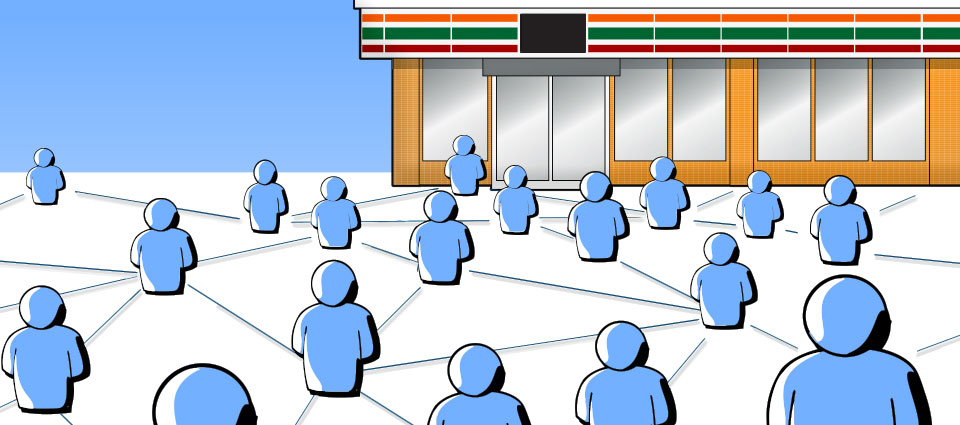How Do Grocery Shoppers Interact Digitally With Their Grocery Stores?
April 17, 2019Online interactions between grocery shoppers and their primary supermarkets are increasing.
The new 2019 U.S. Supermarket Digital & Social Engagement Study from The Retail Feedback Group examines those digital interactions.
“Social media offers an opportunity to open a dialogue with shoppers. A large opportunity gap between shoppers using social media channels and connecting with their stores still exists. Especially alarming is the fact that four of ten shoppers who complained about a poor experience in their supermarket on social media did not receive a satisfactory or empathetic response. This finding presents an opportunity area for retailers to examine more closely, as every opportunity to address an issue for a shopper should be taken seriously,” RFG Principal Dough Madenberg said in a press release about the study’s findings.
We will unpack key findings from this study in 3 areas: exploring the digital interactions between shoppers and grocers; examining who the online grocery shopper is; and social media use.
Digital Interactions
The amount of shoppers who engaged digitally with their primary grocery store increased from 56% in 2017 to 63% in 2018. In other words, more than 6 in 10 shoppers now interact with their main supermarket online.
What are those interactions? Checking the weekly circular is the most important online interaction for more than half of grocery shoppers (55%). Building grocery lists is a close second (47%) and researching special promotions (44%) is the third most prevalent.
One in 4 get recipes from their grocer. About one in 10 (11%) get nutritional advice and 9% read grocery store blogs.
Key Insight: Much of shoppers’ digital interactions with their grocers revolve around planning their shopping trips and looking for special promotions/deals.
Online Shopping
How many shoppers buy groceries online? Just over 1 in 10 (12%), according to this survey’s findings.
Who is the online grocery shopper? Most likely, the online shopper is a resident of an urban/large city/metro area, a Millennial, in a household of 3 or more people and earns at least $100,000 annually.
Who is NOT buying groceries online? Baby Boomers, residents of small towns, members of a two-person household and those with an income between $50,000 to $100,000.
Key Insight: This paints a clear portrait of who the online grocery shopper is and more importantly, who it is not. It also shows that most (88%) of shoppers still prefer to shop in stores.
Social Media
What social media exchanges occur between shopper and grocer? Findings from the study detail which social media channels grocery shoppers prefer, what purchase decisions may be influenced by social recommendations and how prevalent shopper reviews are on grocery channels.
More than 3 in 4 (85%) consumers regularly follow at least 1 social media site yet just 3 in 10 are connected with their primary grocery store.
Which social media channels do shoppers use the most often? Although all age demographics use Facebook the most, Gen X has the highest amount of Facebook users. YouTube is the second-most prevalent social media channel, followed by Instagram and then Pinterest. Millennials use these 3 social media channels more than Gen X and Baby Boomers. Twitter is the fifth-most used social media channel with Gen X using it the most.
Recommendations from shoppers’ social networks increase their willingness to make different purchases.
• 42% would try a new recipe/meal
Gen X is most likely to try a new/meal recipe
• 34 would purchase a new food item
Millennials are most likely to buy a new food item
• 26% would shop at a new store
Millennials are most likely to try shopping at a new store
• 13% would stop shopping at a particular store
Millennials are most likely to stop shopping at a particular store
Fewer than half of shoppers leave a review about their experience in a food store or supermarket. About 4 in 10 shoppers complimented a good experience at a food store or supermarket on social media (41%). About 2 in 10 shoppers used social media to complain about a poor experience at a food store or supermarket in the past year (22%). Of those who complained, 42% said they did not receive a satisfactory or empathetic response from the company.
Key Insight #1: There is a clear gap between the number of shoppers who use social media and the number of shoppers who connect with their primary grocery stores on social media. Is the gap because grocers aren’t on social media? Perhaps customers aren’t aware of existing grocer accounts or maybe the gap is due to a lack of relevant content. Of course, Facebook’s ever-changing algorithm makes it hard for business pages’ content to be visible, which could also explain why so few social media users are connected with their grocers.
Key Insight #2: Shoppers are open to trying new food items, recipes and even new stores if they see a favorable recommendation on their social networks (especially Millennials!). Think about sharing relevant, share-worthy content from your Facebook page that encourages your audience to recommend specific items or your store.
Key Insight #3: While it is encouraging that shoppers are more likely to leave positive reviews than negative reviews, 4 in 10 people who left a negative review failed to receive a satisfactory response. Does your grocery store allocate resources to respond to reviews?

